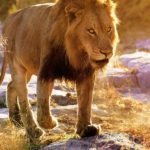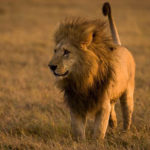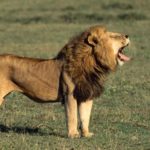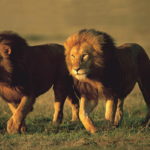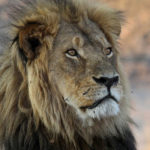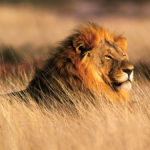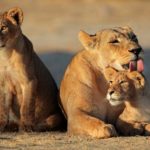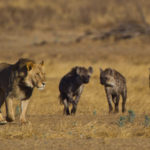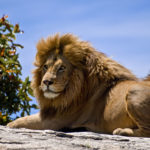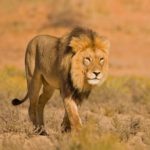How do lions communicate ?
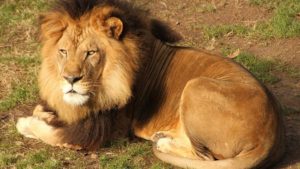 During the rest, the lions communicate with movements. Such gestures include rubbing the head and licking the “interlocutor”, which is compared with leaving in primates. As a sign of salutation, the lions rub against the head, neck or face of another lion. Lions use this sign in case of returning the animal to relatives. Males, usually rub against other males, and the young ones rub against their mothers.
During the rest, the lions communicate with movements. Such gestures include rubbing the head and licking the “interlocutor”, which is compared with leaving in primates. As a sign of salutation, the lions rub against the head, neck or face of another lion. Lions use this sign in case of returning the animal to relatives. Males, usually rub against other males, and the young ones rub against their mothers.
There are many postures and muzzle expressions that are used as visual gestures. They also make sounds, different in strength and height. Lva growl, purr, hiss, cough, bark and roar. The roar occurs in a characteristic manner, beginning with a few deep sounds, and ending with strong ones. Often, lions roar at night, and the sound of their roar is heard at a distance of up to 8 km. So they signal to other animals.
The usual habitats of African lions are savannahs with a small number of rarely growing trees, mostly acacias, which lions use to protect themselves from the sun. In India, they live in a place that is a mixture of shrub and dry savannah. Originally, the lion’s habitat covered the southern part of Eurasia – from Italy to India and Bangladesh, and most of Africa, with the exception of the desert regions of the Sahara and the Central African forests.
Herodotus wrote that in 480 BC. lions lived throughout Greece and attacked the camels of the Persian king Xerxes I during his travels around the country. Aristotle in 300 BC. e. considered lions rare animals. In Greece, the lions were exterminated completely until the year 100 AD. The Asian lion lived in the Caucasus until the 10th century.



